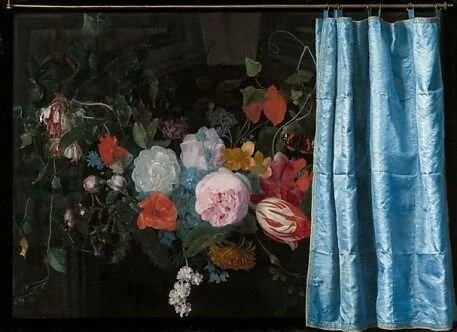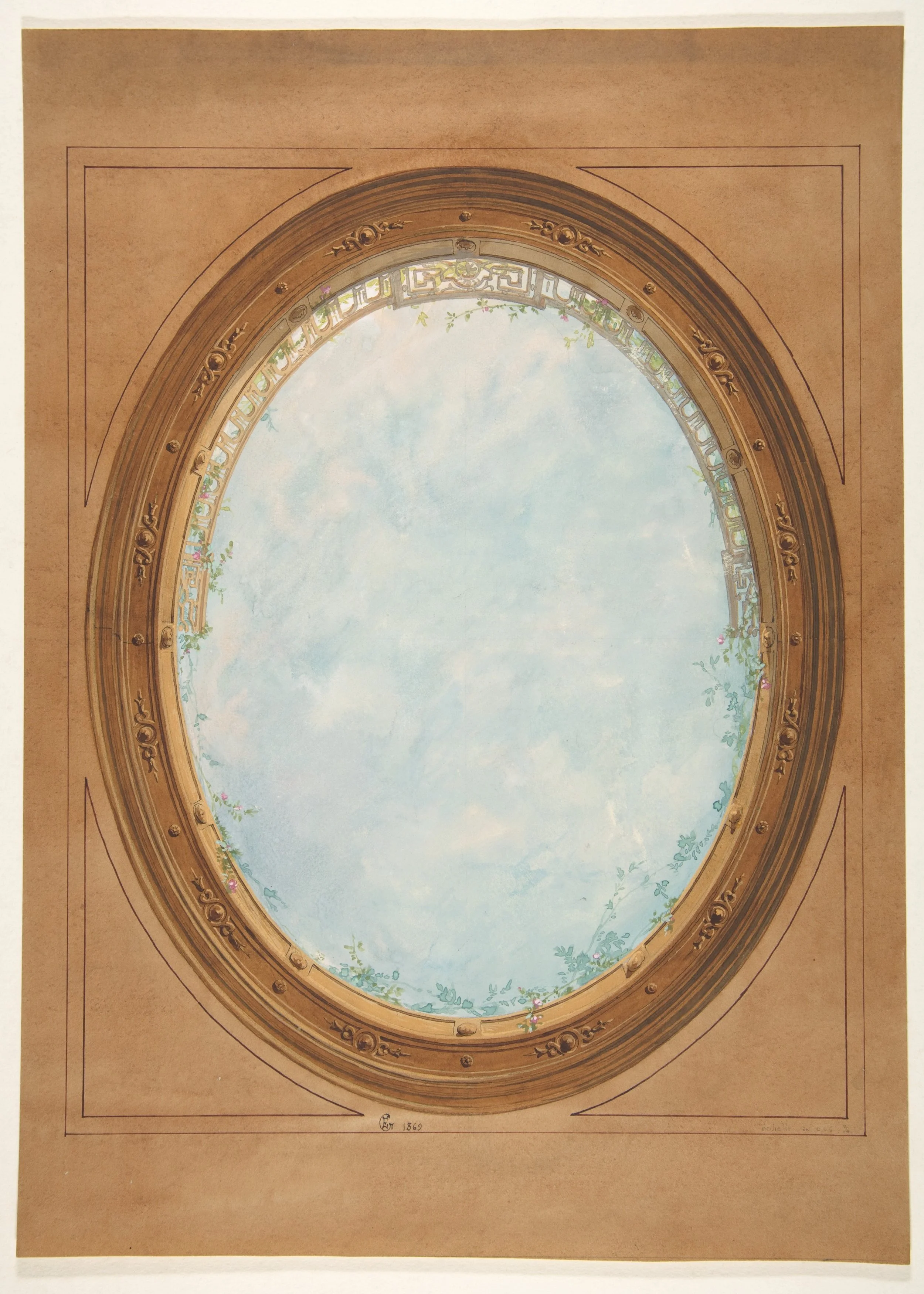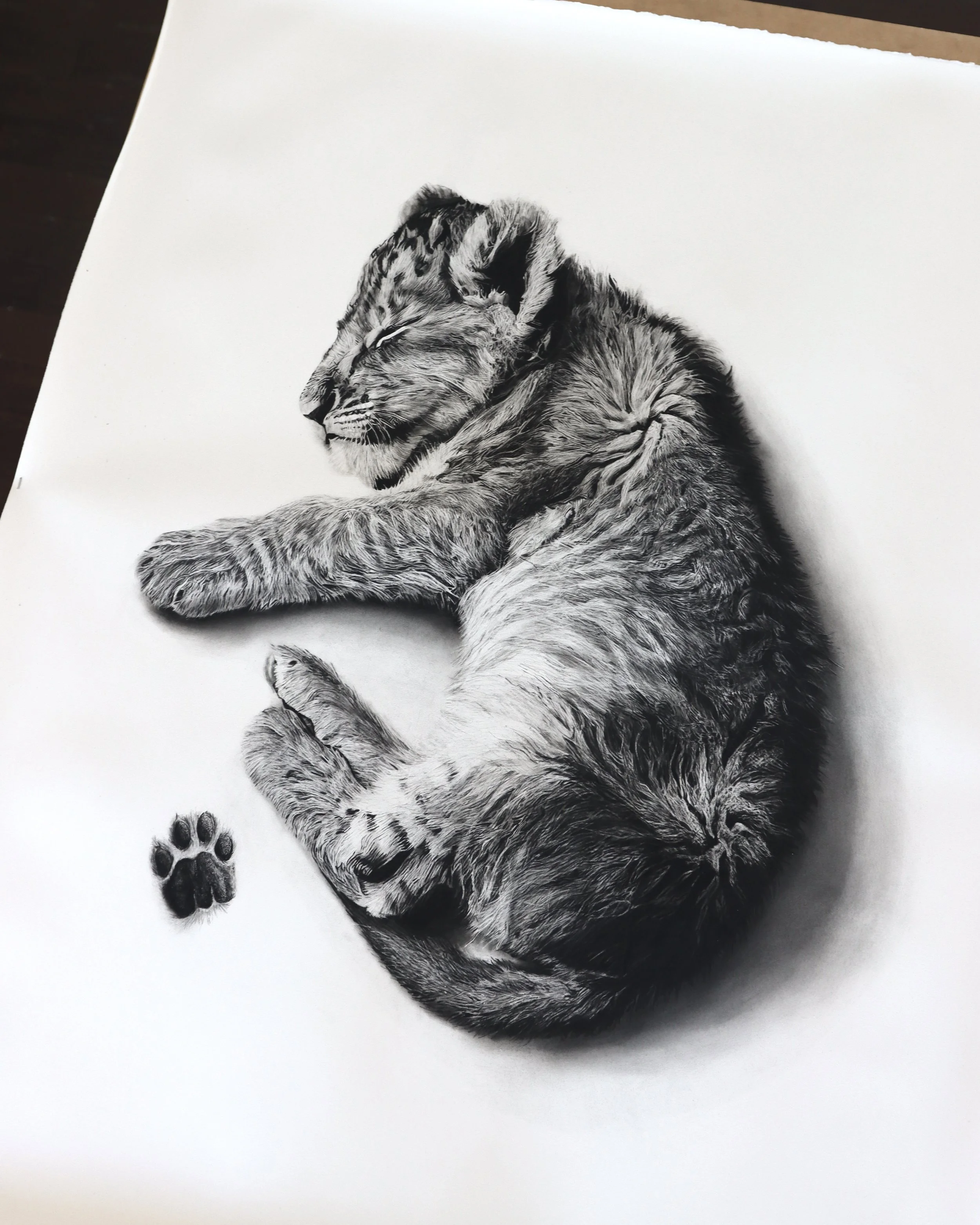The Art of Illusion
Introduction
When people first see my drawings, they often pause, unsure how to describe what they’re feeling. Some say the animals seem alive, as though they might breathe or shift at any moment. That reaction is what I strive for.
My intent isn’t to mimic a photograph; it’s to capture a pulse. Photographs record what exists. My art tries to reveal what’s felt — the quiet presence, the spirit, the life beneath the surface. Through charcoal, I build layers of depth and light until an animal no longer looks drawn, but felt into being. This is the art of illusion: not imitation, but awakening.
A Legacy of Deception
The art of illusion isn’t new. Artists have long tested the boundary between truth and perception, from the Greek legend of Zeuxis and Parrhasius to the Dutch masters who elevated illusion into high art.
One of the most exquisite examples is Adriaen van der Spelt and Frans van Mieris the Elder’s Trompe-l’Oeil Still Life with a Flower Garland and a Curtain (1658), where a delicately painted curtain seems to veil a bouquet. The folds appear so real that viewers have instinctively tried to draw them back. Public domain, The Art Institute of Chicago
Public Domain - Flower Garland
Another master of illusion, Samuel van Hoogstraten, created Trompe-l’Oeil Still Life (ca. 1664), where letters and quills appear pinned to a wooden board. The shadows and paper textures are so convincing that the boundary between object and image vanishes.
Public domain, Rijksmuseum / Google Arts & Culture
And in the 19th century, Jules-Edmond-Charles Lachaise took the concept skyward. His Design for a Ceiling with Trompe-l’Oeil Balustrade and Sky (1869) opened interiors to imagined heavens, blending architecture and dream.
Public domain, The Metropolitan Museum of Art
These works remind us that illusion in art has always been about more than deception. It’s about wonder — that moment when belief and disbelief coexist.
How Charcoal Creates Illusion
My tools are simple: two pencils, fine charcoal dust, and time. No props. No tricks. Just light, shadow, and restraint.
Charcoal’s texture captures the softness of fur, the subtle blur of feathers, and the glint in an eye. Its forgiving nature allows for both precision and atmosphere, every mark adjustable and every highlight earned through removal rather than addition.
Directional movement breathes realism into form. Each hair must follow its natural path, irregular yet patterned, or the illusion collapses.
Negative space is the silence between notes. By leaving backgrounds pure white, the subject commands full presence, appearing to lift from the paper and occupy real space.
Light and shadow are my architecture. They sculpt volume, define emotion, and lead the viewer’s gaze, transforming flatness into tangible life.
Illusion as Connection
For me, illusion isn’t the destination; it’s the bridge. When someone feels they could reach out and stroke a baby wombat’s fur or brush against a bee’s wing, that closeness sparks empathy. The more lifelike the creature, the more we remember it’s real — fragile, vital, deserving of care.
Closing
Illusion in art is more than replication; it’s transformation. It turns charcoal into emotion, drawing into encounter. In my work, illusion becomes truth: wildlife not as subject, but as spirit. Each piece invites the viewer to pause, to look longer, and to feel the quiet wonder of what’s still alive around us.





